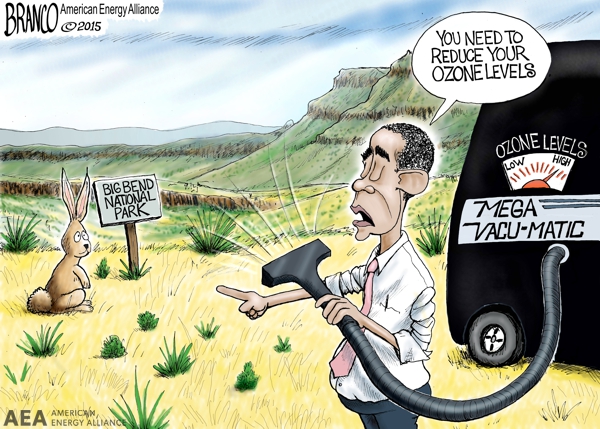In 2015, the Environmental Protection Agency finalized new National Ambient Air Quality Standards (NAAQS) for ground level ozone. This regulation is slated to be one of the most expensive in history, affecting nearly all aspects of the economy. However, the potential benefits come nowhere close to justifying the astronomical costs. Fortunately, H.R. 4775, the Ozone Standards Implementation Act of 2015, seeks to mitigate the damage done by the EPA’s ozone regulations. This legislation offers a sensible path towards protecting Americans from excessive red tape.
In 2014, EPA proposed new regulatory standards for ground level ozone. This proposal looked to lower what were then the current standards from 75 parts per billion (ppb) to as low as 60 ppb. NERA Economic Consulting estimated that a 65 ppb standard could cost more than $1 trillion. Ultimately, the EPA set the new level at 70 ppb, estimating an annual cost of between $1.4 billion and $3.9 billion per year, per the regulatory impact analyses for the final and proposed rule.
Why EPA chose to ratchet down the ozone standard now remains unclear. EPA itself recognizes that ozone levels have dramatically declined since the 1980’s. In fact, national levels fell 33 percent from 1980 to 2014, and fell 18 percent since 2000 alone. On top of this, many areas are still implementing the previous round of ozone regulations.
Further complicating the situation is that much of the “low hanging fruit” — reductions in ozone from sources such as power plants — has already been picked. This means that plans to reduce ozone levels must include other “unknown controls,” according to the EPA. Ultimately, the new 70 ppb standard has left many questions unanswered and a looming threat of massive compliance costs.
H.R. 4775 would offer relief to American communities from these ozone regulations. Sponsored by Reps. Olson, Flores, Scalise, Latta, McCarthy, and Curbelo, the legislation takes several steps to ease the pain of EPA’s ozone standards. First, the bill extends implementation deadlines for the 2015 ozone standards until 2025, giving states more time to work with stakeholders to reach attainment. Allowing more time for states is not only reasonable, but critical if they hope to come anywhere close to complying with the regulation.
Second, the legislation amends the Clean Air Act by changing the timeline for review of air pollutants under NAAQS from five to 10 years. Requiring a review of all air pollutants every five years is a waste of resources. A 10-year review cycle allows ample opportunity for oversight and promotes clean air while ensuring states are not strained by continuous, entirely unnecessary and frequent reviews.
Finally, this bill further amends the Clean Air Act by directing the EPA Administrator to consider technological feasibility when reviewing and revising NAAQS. This provides a key check on the process, helping to prevent arbitrary rule-making that cannot possibly be met.
Overall, H.R. 4775 takes a step in the right direction. The legislation improves flexibility, enacts much needed reforms, and helps states in their efforts, all while still working to promote clean air.
